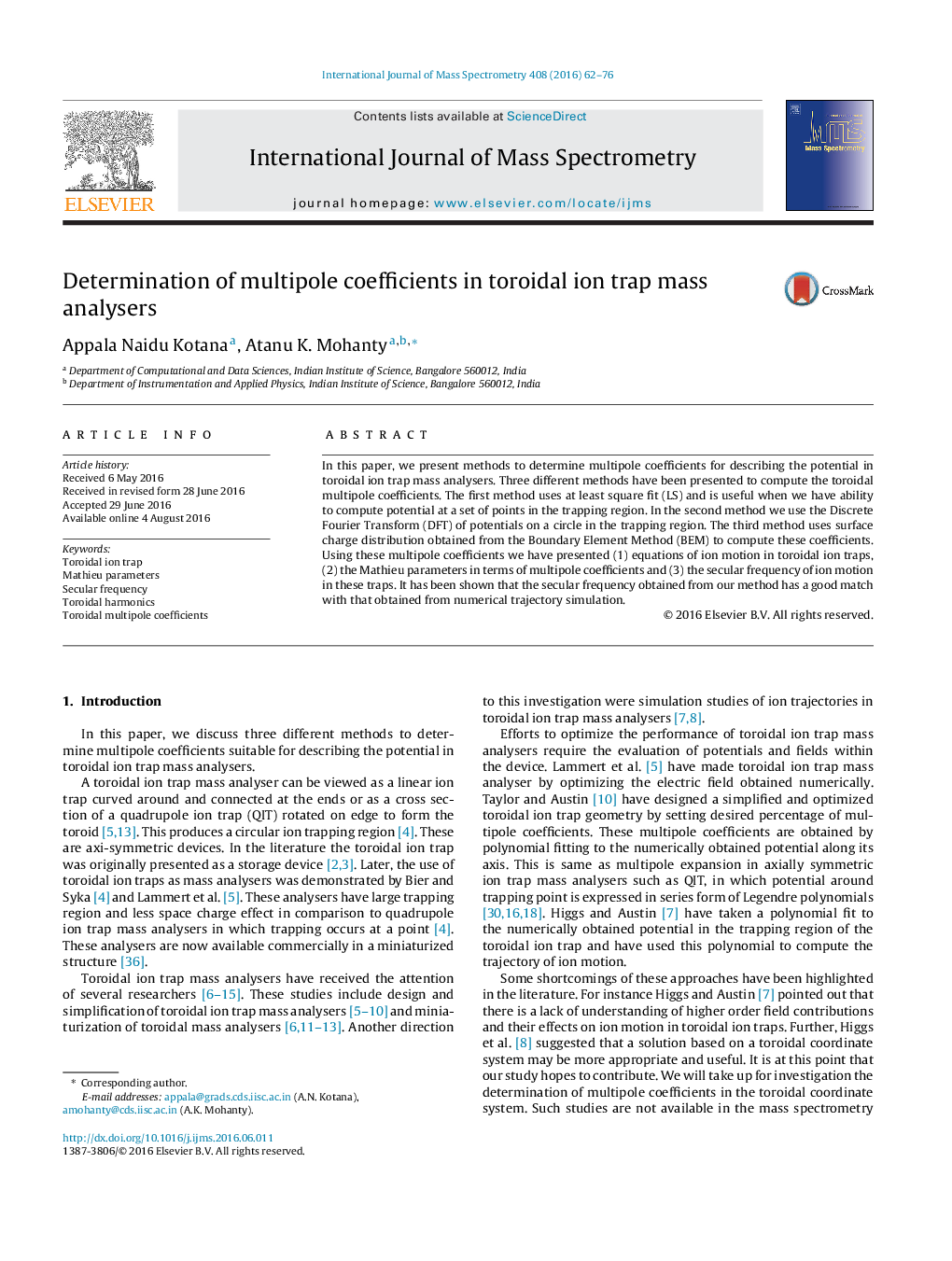| Article ID | Journal | Published Year | Pages | File Type |
|---|---|---|---|---|
| 5134331 | International Journal of Mass Spectrometry | 2016 | 15 Pages |
â¢Three different methods are presented to compute toroidal multipole coefficients.â¢These methods are compatible with the common trap field computation schemes.â¢Mathieu parameters are expressed in terms of toroidal multipole coefficients.â¢Predicted secular frequency agrees well with that observed in numerical simulation.
In this paper, we present methods to determine multipole coefficients for describing the potential in toroidal ion trap mass analysers. Three different methods have been presented to compute the toroidal multipole coefficients. The first method uses at least square fit (LS) and is useful when we have ability to compute potential at a set of points in the trapping region. In the second method we use the Discrete Fourier Transform (DFT) of potentials on a circle in the trapping region. The third method uses surface charge distribution obtained from the Boundary Element Method (BEM) to compute these coefficients. Using these multipole coefficients we have presented (1) equations of ion motion in toroidal ion traps, (2) the Mathieu parameters in terms of multipole coefficients and (3) the secular frequency of ion motion in these traps. It has been shown that the secular frequency obtained from our method has a good match with that obtained from numerical trajectory simulation.
Graphical abstractThis paper presents methods to determine multipole coefficients for describing the potentials in toroidal ion trap mass analysers. Schematic view of toroidal ion trap obtained from a quadrupole ion trap rotated on edge to form the toroid. Comparison of secular frequency obtained using the multipoles with numerical simulations. Download high-res image (217KB)Download full-size image
